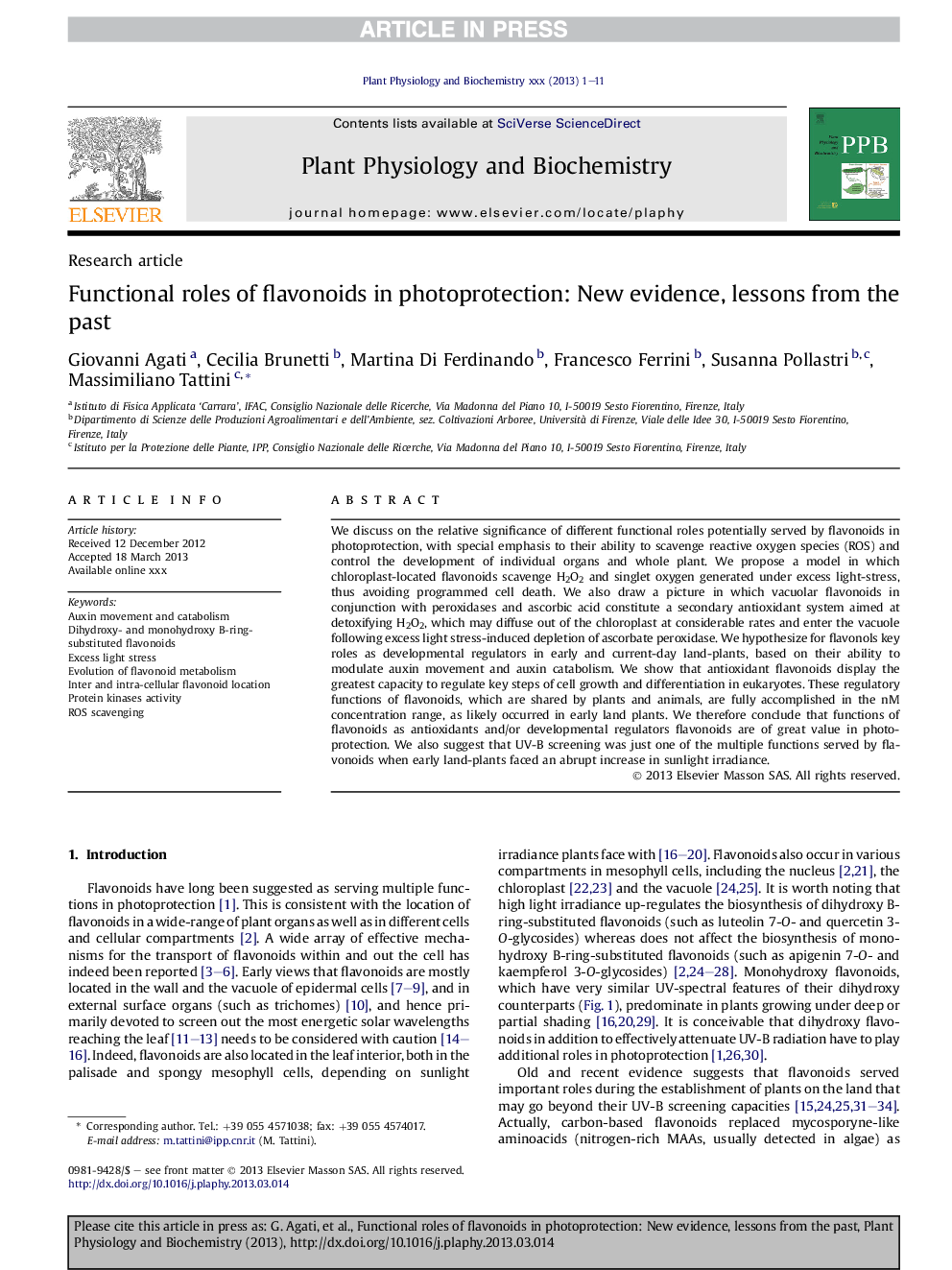| Article ID | Journal | Published Year | Pages | File Type |
|---|---|---|---|---|
| 8355204 | Plant Physiology and Biochemistry | 2013 | 11 Pages |
Abstract
We discuss on the relative significance of different functional roles potentially served by flavonoids in photoprotection, with special emphasis to their ability to scavenge reactive oxygen species (ROS) and control the development of individual organs and whole plant. We propose a model in which chloroplast-located flavonoids scavenge H2O2 and singlet oxygen generated under excess light-stress, thus avoiding programmed cell death. We also draw a picture in which vacuolar flavonoids in conjunction with peroxidases and ascorbic acid constitute a secondary antioxidant system aimed at detoxifying H2O2, which may diffuse out of the chloroplast at considerable rates and enter the vacuole following excess light stress-induced depletion of ascorbate peroxidase. We hypothesize for flavonols key roles as developmental regulators in early and current-day land-plants, based on their ability to modulate auxin movement and auxin catabolism. We show that antioxidant flavonoids display the greatest capacity to regulate key steps of cell growth and differentiation in eukaryotes. These regulatory functions of flavonoids, which are shared by plants and animals, are fully accomplished in the nM concentration range, as likely occurred in early land plants. We therefore conclude that functions of flavonoids as antioxidants and/or developmental regulators flavonoids are of great value in photoprotection. We also suggest that UV-B screening was just one of the multiple functions served by flavonoids when early land-plants faced an abrupt increase in sunlight irradiance.
Keywords
Related Topics
Life Sciences
Agricultural and Biological Sciences
Plant Science
Authors
Giovanni Agati, Cecilia Brunetti, Martina Di Ferdinando, Francesco Ferrini, Susanna Pollastri, Massimiliano Tattini,
